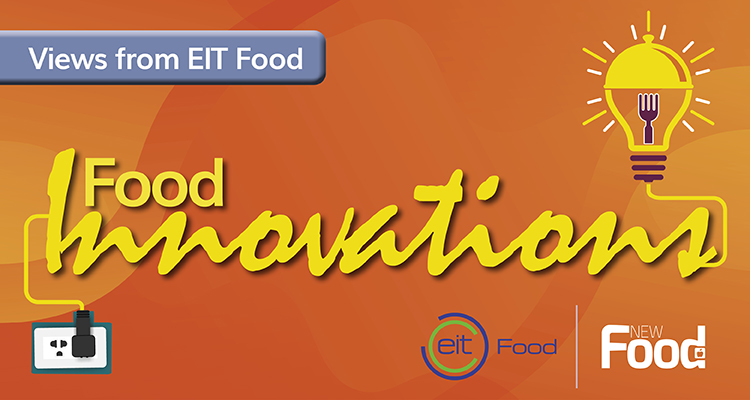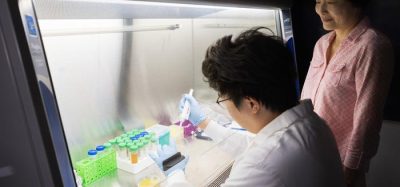How can we solve water scarcity?
Posted: 16 August 2022 | Dr. Andy Zynga | No comments yet
As droughts become more frequent, EIT Food’s CEO Andy Zynga uses his second column to examine the possible ways we can respond to water scarcity through food innovation.


On top of climate change altering heat, rainfall and weather patterns, factors such as overconsumption, water pollution and the growth of resource-intensive industries means the solutions to water scarcity are as complex as the causes. One thing we do know, however, is that the food system has a crucial role to play in creating and scaling these solutions.
The food system and water
With current food production methods, it takes an average of 2,000-5,000 litres of water to produce the food consumed by one person daily.3 When considering the size and growth of the global population, the level of water use associated with food production is astronomical.
What’s more, the agricultural sector as a whole is responsible for up to 78 percent of global ocean and freshwater pollution.4 Despite policies and regulations that aim to reduce water pollution, agrochemicals, drug residues, sediments and organic matter can be discharged into precious and valuable water bodies as a result of traditional agricultural activities, putting the ecosystems and organisms that depend on them – including us – at risk.
Our food system can do better. To ensure water is preserved, recycled and reused by default, we need to support innovators that are creating solutions, and provide education and resources for farmers and food businesses. The acceleration of agrifood innovation has a huge role to play in supporting farmers to introduce new agricultural methods that reduce water consumption and eradicate all forms of water pollution associated with food production.
The role of sustainable agriculture innovation
Technology has huge potential to help us reduce water consumption in the food system. The use of satellite technology, for example, can support farmers to transition to ‘smart farming’ whereby agricultural activities and irrigation methods are monitored and optimised using data analysis and insights, ensuring crops get the exact amount of water they need to thrive. For example, Italy-based startup Agricolus – one of EIT Food’s RisingFoodStars – uses a cloud platform to help farmers forecast and increase their yield, prevent and monitor pests and disease, and crucially, reduce their water consumption. Technologies such as this offer great potential to transform the way we produce food by helping farmers to improve their water efficiency as well as their yield and profitability.
Innovative methods to increase the uptake of climate-smart farming methods can also help to reduce water consumption and pollution. Soil Capital, for example, introduced Europe’s first certified carbon payment programme for farmers, which places value on the way food is produced by rewarding regenerative practices. Regenerative agriculture, which aims to improve soil health and increase biodiversity on farms, can help to reduce water pollution and waste. By improving the health of soil, we can increase its ability to retain water, meaning there is less need for water-intensive crop irrigation. Regenerative agricultural techniques also reduce the need for chemical inputs, meaning negative environmental impacts are reduced and water run-off from farms becomes cleaner and can therefore be reused for other purposes.
A systems approach to reducing water scarcity
There are many other ways for the food system as a whole to address water scarcity, ranging from improving transparency on water usage between food businesses and consumers, to reducing the amount of food that we waste.
The development of evidence-based environmental food labelling schemes, for example, means businesses are held more accountable for their water usage and consumers can make more informed decisions about the food products they are buying and their impact on water as a result. The Foundation Earth project is doing just that, incorporating measurements such as freshwater use on farms, water use during food processing and machine cleaning, and eutrophic substance run-off into waterways. By measuring these elements and ‘ranking’ food products, businesses across the whole food system will be encouraged to make positive changes in their activities and supply chains.
Consumers having a greater level of available information about food products may also provoke a dietary shift. The increase in plant-based food and protein diversification innovation, for example, means more food options are becoming available for consumers and, combined with sufficient education, these food labelling schemes could help inform consumers about the environmental benefits of adapting their dietary habits. Plant-based foods tend to have a lower water (and carbon) footprint compared to conventional meat products – it takes approximately 1,250 litres of water to produce 1kg of lentils, for example, whereas 13,000 litres are needed to produce the same 1kg of beef.5
Reducing food waste is another potential solution. Each year, one-third of all produced food is either lost or wasted, leading to a volume of wasted water equivalent to approximately three times the volume of Lake Geneva, the largest lake in central Europe.6 The more support provided for innovators and SMEs that are working to reduce food wastage and loss, the more we can also save on the water needed to grow, maintain and produce these food products.
There is no easy fix to water scarcity, but by collaborating, sharing knowledge and holding each other accountable, the food system can be the driving change in slowing the flow of water waste and reducing water scarcity. As one of our most precious global resources, if we are to create a food system that is truly sustainable, we must make a meaningful shift in how we treat and manage water use across the entire food system.
About the author
Dr Andy Zynga, a member of the New Food Advisory Board, is the CEO of EIT Food, a food innovation community working to build a future-fit food system that produces healthy and sustainable food for all. EIT Food is supported by the European Institute of Innovation and Technology (EIT), a body of the European Union. Based in Leuven, Andy has international experience in food systems, innovation, telecoms and technology services, and a proven track record in building profitable businesses in the US and Europe.
References
- eea.europa.eu/highlights/water-stress-is-a-major
- https://joint-research-centre.ec.europa.eu/jrc-news/droughts-europe-july-2022-almost-half-eu-uk-territory-risk-2022-07-18_en
- fao.org/fao-stories/article/en/c/1185405/?_
- fao.org/3/i7754e/i7754e.pdf
- fao.org/zhc/detail-events/en/c/880881/
- fao.org/fao-stories/article/en/c/1185405/
Related topics
Environment, Equipment, Food Security, Food Waste, Ingredients, Processing, Research & development, Sustainability, Water









